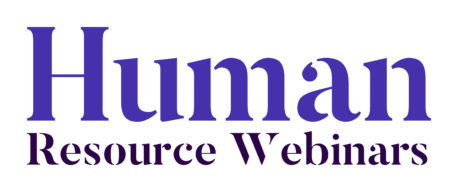Understand how pandemic changes to working structures changed the talent marketplace – and what that means for recruitment.
Get to know why using data can help recruitment functions become better partners to the business.
See where data utilization in the recruitment process can augment and boost your business position as the hiring organization of choice in your industry.
Watch the Recruiting Webinar On-Demand
Speaker Panel

Lauren Groshong, Business Recruiting Manager, Grammarly

Andrew Heywood, Recruiting Manager, Roblox

Amy Silverman, Head of Midwest Recruiting, Chime

Jon Kennard, Editorial content manager, UNLEASH
With the labor market in a highly competitive state and change happening at a seemingly ever-quicker rate, UNLEASH shares the latest on using data to bring a winning edge to your recruitment practices.
Chaired and hosted by Jon Kennard, Editorial content manager at UNLEASH, Lauren Groshong, Business Recruiting Manager at Grammarly, Andrew Heywood, Recruiting Manager at Roblox, and Amy Silverman, Head of Midwest Recruiting at Chime
Competitiveness reveals how to place data at the heart of your hiring to become a more compelling employer of choice, more in line with current trends in your industry, and a better partner to the business.
Join us live to learn about:
- Receive insights into how using data can make your company a more compelling product to sell to potential hires
- Understand why not all metrics and not all data are equal and why data might need looking at in a variety of different ways to drive better outcomes
- Hear about how a firm in one of the most data-driven industries, FinTech, is using data to improve its recruitment strategy continuously.
Candidates aer window shopping at the moment and your window has got to be compelling to even bring them into the store.
Lauren Groshong, Business Recruiting Manager at Grammarly
What does data-driven recruitment mean?
With many firms wanting to use recruitment and talent data to gauge how they’re doing against their key talent metrics, UNLEASH polled webinar attendees on how they were doing on evolving into being a function that used data to drive recruitment decisions. The most popular answer was “we’ve got work to do but we’re on our way” which suggested that organizations understand the importance of data but need to implement their data-driven strategies.
Before any organization can pivot to being a data-driven operation, they must understand what this means. Here, Heywood had a simple answer. For him, data allows recruiters to “see under the hood” of every stage of the talent lifecycle, which can result in improved practice. Groshong agreed with Heywood, adding that because storytelling is a powerful recruitment tool, data-driven recruitment would allow talent professionals and recruiters to trust in their stories more, as well as enable them to better see what their talent markets look like.
This results in, as Groshong described, recruitment functions being better partners to the business. This is incredibly important, Silverman added, as firms have to deal with fast-paced change, which requires updating their models rapidly. Something which can be done effectively if data can show where and in what direction those big upheavals are happening.
Where can recruiters get their data from?
One of the first steps organizations take when wanting to evolve to be more data-driven is understanding where they can get usable data from. For Groshong, her first port of call is the ATS, which is a tool most organizations should be able to use. However, she augments this data with a specific data-discovery program provided by Gem, allowing her to see key metrics at different parts of the recruitment journey and better understand where efficiencies can be made and frustration points are.
For Heywood, data can come from almost anywhere. Looking at what content resonates with the candidate pipeline to what kind of profiles get the best response from potential hirees. This data, Heywood warned, cannot be the endpoint in itself; it should spark recruitment functions into wanting to take the next steps, whether that is A-B testing different techniques – such as reaching out to sought-after talent in different ways – or tweaking the overall strategy. He also reminded attendees to be thorough, using different systems or metrics to get different data sets.
It’s not just about getting data on current metrics. Historical data can inform current performance. As Heywood reminded everyone on the webinar, stopping, looking at past performance, pausing, and reflecting can help recruitment functions move forward most effectively.
How to use data effectively
It can be challenging for HR to know where to get started on their data-evolution journey in recruitment, especially when it is clear there are so many areas that would benefit from a process where data informs it. However, the recruitment practitioners on the webinar did highlight some key areas where data use can be effective and some crucial ethos that should inform its use.
This is what they said:
Consider what is being measured: Recruiters have got to understand the key metrics of success before they use data appropriately. What are they measuring? Is it response rate, time to fill, and measurement against industry benchmarks? Know what success looks like.
Competition should drive recruitment improvements: With the labor market extremely competitive, Heywood noted that getting data and information on what the market is doing and what candidates want from work is key to updating models to be successful.
The hierarchy of metrics: Not all measurements of equal, at least according to the recruitment leaders on this webinar. For one, the interest rate in vacancies is the best metric. But that doesn’t mean this will always be the case. Recruiters should always be reflecting on their metrics as some might become outdated or need revamping. This reflection should then drive performance.
Data isn’t the panacea: Collecting data is essential, but it is only one step to getting better at recruitment. Data should then drive testing of different recruitment techniques and strategies, aiming to better connect with a potential hire.
Data, comfortability, and confidence: Not every recruiter will be a data expert. But by building a recruitment team with data experts on it and using their insights to give others build even better techniques, organizations will give their recruiters confidence they are doing the right thing.

